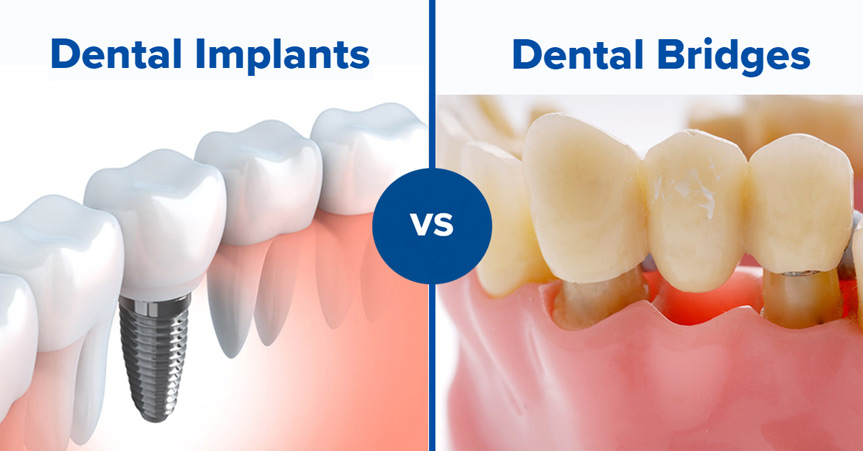If you are considering improving your oral health or enhance your smile, crowns or bridges may be your perfect options. These two different types of restorative dentistry are used for different purposes. Before you decide which option is ideal for you, you must first learn the differences between the two. However, both crowns and bridges are dentists’ easiest jobs.
In this article, we are going to discuss the differences between dental crowns and bridges. But before that, it is worth mentioning that dental anxiety can affect your gut health.
What is a dental crown?
A dental crown is a type of dental application that is used to cap or cover a damaged or badly broken tooth. The goal is not to remove a patient’s natural tooth if possible. Sometimes, the dentist can cap the tooth with a synthetic cap called a crown in a bid to save a tooth.
A dental crown can serve a number of purposes, but the main purpose is to strengthen the compromised tooth, protect the tooth from any further damage or decay, as well as restore the appearance of the tooth. A dentist will recommend a crown if the integrity of your tooth has been compromised. Your tooth may become compromised in several ways. But generally, a crown will help protect a weak tooth from breaking or cracking.
What is a bridge?
A dental bridge is also another dental treatment that aims at replacing a missing tooth. The gap left by missing teeth can cause various problems such as shifting teeth or a bad bite. In severe cases, the missing teeth can result in gum disease.
How do dental crowns work?
During a dental crown process, the tooth is filled down and reshaped into a smaller size. After that, the tooth decay is removed from the surface of the tooth and the structure is restored to make it support the crown. The crown is then placed on the surface and cemented into position. This acts as a cap over the newly shaped tooth and improves its strength. Crowns are generally made from one or a mixture of various materials. One of the most durable and cost-effective materials is Gold alloy. However, they won’t really look like your natural teeth. Acrylic, porcelain, and ceramic crowns will closely match your natural teeth. Both the ceramic and acrylic crowns are well known for their durability. Porcelain, on the other hand, is more vulnerable to damage and chipping, but if it is bonded to a metal shell, it can last longer.
How do bridges work?
A dental bridge procedure generally requires two sessions. In the first session, the dentist will administer local anesthesia and file down the anchor of the teeth that will serve as the support for the bridge. If your surrounding teeth are showing signs of decay or damage, a dental implant may be recommended. Your dentist will then take a dental mould of your teeth which they use to create false teeth. During this process, the dentist will create a temporary dental bridge, which will be out for a permanent one on your second session.

